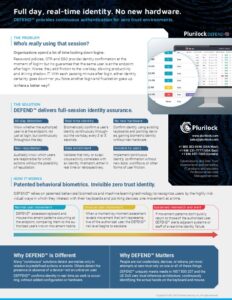Deep Dive into Alert Fatigue in Cybersecurity: Understanding, Impact, and Mitigation
Introduction
In the realm of cybersecurity, staying vigilant against threats is paramount. Organizations invest heavily in security systems and technologies to detect and respond to potential breaches. However, a growing concern in the field is alert fatigue, a phenomenon where security professionals become overwhelmed by the sheer volume of alerts generated by these systems. This deep dive aims to explore the concept of alert fatigue in cybersecurity, highlighting its significance, causes, and potential mitigation strategies.
Understanding Alert Fatigue
Definition
Alert fatigue, in the context of cybersecurity, refers to the desensitization and reduced effectiveness of security personnel due to an overwhelming number of alerts and notifications generated by security tools and systems. When security professionals are inundated with numerous alerts, their ability to distinguish critical threats from false positives diminishes, leading to delayed or missed responses to actual security incidents.
The Prevalence of Alert Fatigue
Alert fatigue has become a widespread concern in the cybersecurity landscape, primarily due to the exponential increase in the volume of alerts generated by security tools. With the proliferation of connected devices and the complexity of modern IT infrastructures, security systems are constantly generating alerts for various events, including potential vulnerabilities, suspicious activities, and malware outbreaks.
Why Alert Fatigue Matters
The Consequences of Alert Fatigue
Alert fatigue poses significant risks to organizations’ cybersecurity posture. Here are some of the key consequences:
Missed Threats
The primary concern is that overwhelmed security professionals may overlook or dismiss legitimate threats. When alerts become indistinguishable, there’s a higher likelihood that critical security incidents go unnoticed, allowing attackers to gain a foothold within an organization’s network.
Increased Response Times
Even when security professionals do recognize a genuine threat, the sheer volume of alerts can lead to slower response times. Delayed responses can be detrimental, as it provides attackers with more time to exploit vulnerabilities and exfiltrate sensitive data.
Employee Burnout
The continuous barrage of alerts can lead to employee burnout, as security professionals are constantly on high alert, dealing with a relentless stream of alarms. This can result in reduced job satisfaction, increased turnover, and decreased overall productivity.
False Positives and Noise
A significant portion of alerts generated by security systems are false positives—notifications that appear to indicate a threat but are, in fact, benign. Dealing with these false alarms consumes valuable time and resources, diverting attention away from real threats.
Regulatory and Legal Implications
Beyond the immediate operational consequences, alert fatigue can have legal and regulatory ramifications. Many industries are subject to data protection regulations that require timely detection and reporting of security breaches. Failure to comply with these regulations can result in fines and legal actions, further underscoring the importance of effective threat detection and response.
Causes of Alert Fatigue
Understanding the root causes of alert fatigue is essential for developing effective mitigation strategies. Several factors contribute to the phenomenon:
Alert Overload
The sheer volume of alerts generated by security tools is a primary driver of alert fatigue. As organizations adopt more sophisticated security solutions and collect more data, the number of alerts increases exponentially. Human operators simply cannot keep up with this influx of information.
Lack of Context
Many alerts lack context, making it challenging for security professionals to prioritize them effectively. Without sufficient information about the nature and potential impact of an alert, it becomes difficult to determine its significance.
False Positives
False positives, or alerts triggered by benign events, are a constant source of frustration for security teams. These false alarms not only waste time but also erode trust in the alerting system, causing security professionals to become more skeptical of the alerts they receive.
Poorly Tuned Systems
Security systems that are not adequately tuned to an organization’s specific needs can generate excessive and irrelevant alerts. Tuning these systems to reduce false positives and focus on critical threats is a complex and ongoing process.
Lack of Automation
Manual analysis of alerts is time-consuming and prone to errors. Without automation, security professionals may struggle to keep up with the volume of alerts and prioritize them effectively.
Importance of Addressing Alert Fatigue
Given the potential consequences and the growing prevalence of alert fatigue, addressing this issue is of paramount importance. Here’s an in-depth analysis of why organizations should prioritize the mitigation of alert fatigue:
Enhanced Threat Detection
Effectively combating cyber threats requires timely detection and response. Alert fatigue hampers this process, making it difficult to identify and address security incidents promptly. By reducing alert fatigue, organizations can enhance their threat detection capabilities and better protect their digital assets.
Retention of Skilled Personnel
Skilled cybersecurity professionals are in high demand. Alert fatigue can lead to burnout and job dissatisfaction, causing talented employees to seek opportunities elsewhere. Retaining skilled personnel is crucial for maintaining a strong cybersecurity team.
Regulatory Compliance
Many industries are subject to strict data protection regulations that mandate timely breach detection and reporting. Alert fatigue can result in delayed or missed breach notifications, exposing organizations to legal and financial consequences.
Preservation of Reputation
A cybersecurity breach can have severe reputational damage. Organizations that fail to adequately address alert fatigue may suffer breaches that tarnish their image and erode trust among customers and partners.
Cost Savings
Alert fatigue can be costly in terms of both time and resources. The hours spent manually sifting through alerts, investigating false positives, and responding to incidents can be significantly reduced through effective alert management strategies.
Mitigating Alert Fatigue
Mitigating alert fatigue requires a multifaceted approach that combines technology, process improvements, and a proactive mindset. Here are some key strategies to address alert fatigue effectively:
1. Contextualization of Alerts
Provide context-rich alerts that include relevant information about the alert’s nature, potential impact, and recommended actions. This enables security professionals to prioritize alerts based on their significance.
2. Fine-Tuning of Alerting Systems
Regularly review and fine-tune security systems to reduce false positives and ensure that alerts align with the organization’s risk profile. Leveraging machine learning and AI technologies can help automate this process.
3. Automation
Leverage automation to handle routine tasks, such as alert triage and initial investigation. Automation can significantly reduce the workload on security professionals, allowing them to focus on higher-level tasks.
4. Threat Intelligence Integration
Integrate threat intelligence feeds to provide context and enrichment to alerts. This helps security teams better understand the threat landscape and make informed decisions about the severity of alerts.
5. Prioritization Frameworks
Implement alert prioritization frameworks that categorize alerts based on their criticality and potential impact. This enables security professionals to focus on the most important alerts first.
6. Training and Awareness
Invest in training and awareness programs for security personnel to help them recognize and manage alert fatigue. Educating employees about the risks and consequences of alert fatigue can promote a proactive approach to its mitigation.
7. Incident Response Planning
Develop and regularly update incident response plans that outline how to respond to different types of security incidents. Having a well-defined plan in place can reduce response times and mitigate the impact of security breaches.
8. Collaboration and Communication
Facilitate collaboration and communication among different teams within the organization, including IT, security, and management. Effective communication ensures that everyone is aligned on security priorities and can respond to threats efficiently.
9. Monitoring and Metrics
Implement monitoring and reporting mechanisms to track the effectiveness of alert management strategies. Regularly assess key performance indicators (KPIs) to identify areas for improvement.
10. Continuous Improvement
Alert fatigue mitigation is an ongoing process. Regularly review and update alert management strategies to adapt to changing threat landscapes and technology environments.
Conclusion
Alert fatigue is a critical issue in cybersecurity that organizations must address to maintain an effective defense against evolving threats. The consequences of alert fatigue can be severe, ranging from missed threats to regulatory non-compliance and reputational damage. By implementing a holistic approach to mitigate alert fatigue, including technology enhancements, process improvements, and a proactive mindset, organizations can enhance their ability to detect and respond to security incidents effectively. In an ever-evolving cybersecurity landscape, staying ahead of alert fatigue is not just a best practice; it’s a necessity for safeguarding digital assets and preserving organizational integrity.














